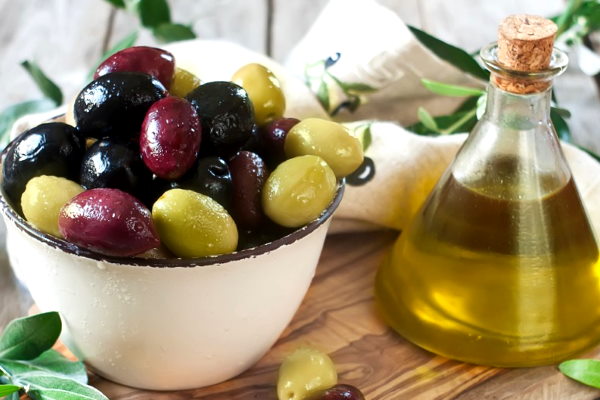
Can Babies Eat olives?
The olive is a small evergreen tree or shrub originating in the eastern Mediterranean Basin, the first fossil evidence found there indicating that olive trees existed 20-40 million years ago. Nowadays olive trees are not only cultivated in the countries of the Mediterranean, but also in South America, South Africa, Australia and in the USA. The olive’s fruit, simply called the olive, is treated in culinary terms as a vegetable, just like tomatoes. Olives are cultivated for their fruit and for the olive oil extracted from the olives. Olives can be picked at different stages, when they are still unripe and green, or after they are ripe and when their color changes into a purplish-black.
Olive Oil
Most of the harvested olives are turned into olive oil, which is obtained by pressing whole olives and extracting their oil. Olive oil is the most commonly used vegetable oil in cooking, but also for frying foods or simply as a salad dressing. It is frequently used in cosmetics and pharmaceuticals.
Approximately 10% of the olives are used as table olives and they are classified in 3 different categories, depending on their ripeness: green olives, semi-ripe or turning-color olives and black olives or ripe ones.
Olives are a good source of monounsaturated fats and vitamin E. They also contain dietary fibers, vitamins B1, B3, B6, calcium, iron and magnesium. Olives are very high in sodium.
Olive trees pollen is highly allergenic.
What Are The Benefits Of Eating Olives?
Olives are high in vitamin E and several antioxidants, which are good for heart health, they protect against osteoporosis and cancer, help fight inflammations and infections caused by bacteria.
Can You Give A Baby Olives And Olive Oil?
You can slice or cut a full olive into smaller slices, to avoid choking. Olives can be used as finger food for babies, starting at the age of 6 months. Olive oil is high in monounsaturated fats and fatty acids, which can be also found in breast milk and help promote a baby’s healthy growth. Olive oil can be put into baby food as an ingredient or simply poured into a baby’s bottle, because it improves constipation. Olive oil used on skin facilitates its regeneration and keeps it toned.
Tapenade
Ingredients: 1 ½ cup of pitted Kalamata olives, ½ cup parmesan cheese, 2 tbsp olive oil, 1 garlic clove, 6 fresh basil leaves, 1 tbsp lemon juice.
Put all the ingredients into a food processor and blend them into a smooth puree. Spread the tapenade on crackers or on a sandwich and serve.
FAQ
What are olives?
The olive is a small evergreen tree or shrub. The olive’s fruit, simply called the olive, is treated in culinary terms as a vegetable, just like tomatoes. Olives are cultivated for their fruit and for the olive oil extracted from the olives.
How healthy are olives?
Olives are a good source of monounsaturated fats and vitamin E. They also contain dietary fibers, vitamins B1, B3, B6, calcium, iron and magnesium. Olive oil is high in monounsaturated fats and fatty acids, which can be also found in breast milk and help promote a baby’s healthy growth. Olive oil can be put into baby food as an ingredient or simply poured into a baby’s bottle, because it improves constipation. Olive oil used on skin facilitates its regeneration and keeps it toned.
When can you start giving olives to your baby?
Olives can be used as finger food for babies, starting at the age of 6 months.
The risks of giving olives to your baby?
Olives are very high in sodium and can represent a risk of choking. Olive trees pollen is highly allergenic.



